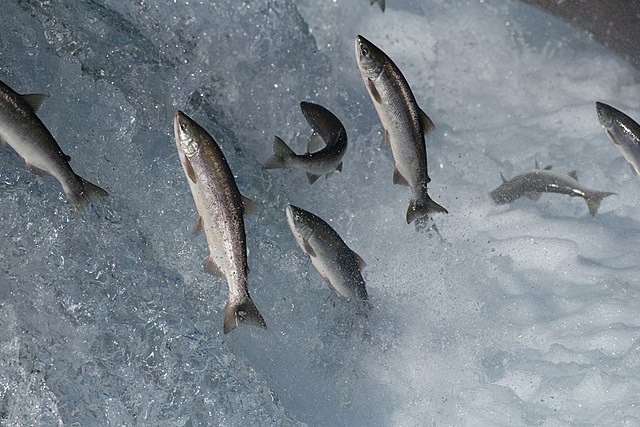
Why Do Salmon Swim Upstream?
One Of Nature’s Most Most Famous Voyages
Every year, salmon undertake what might seem like one of the most illogical journeys in nature. They leave the sea and swim up estuaries, returning to the rivers where they were born, a journey that can span hundreds of miles. It typically takes salmon about 14 to 21 days to swim upstream to their spawning grounds, guided by the memorised scent of their birthplace and the Earth’s magnetic field . They’re engaging in an epic pilgrimage back to their natal rivers—the exact location where they were born — to spawn, reproduce, and start the whole lifecycle again.
This behaviour is a true call of nature, and an extraordinary one at that, as most salmon die of exhaustion once spawning is completed. This journey is partly explained by the Salmon’s anadromous nature, meaning they are born in freshwater, migrate to and live in the saltwater sea during adulthood, and return to freshwater to spawn. As a point of note, Sturgeon are also known to exhibit this extreme migratory behaviour. This anadromous behaviour of Salmon is controlled by their intrinsic biological clock that triggers spawning behaviour which is vital for the continuation of their species. But this still begs the question: Why not spawn near the river mouth if they only seek freshwater? Why make the exhausting and nearly impossible journey back to their birthplace just to reproduce? It seems to be an extreme course of action without obvious justification!
The Advantages And Disadvantages Of The Journey
Experts explain that estuaries and river mouths are not ideal for spawning because they are often murky, silt-laden environments with low oxygen levels. These areas are also partially saltwater and are wide, exposed spaces that serve as prime hunting grounds for predators. In contrast, the freshwater areas further upstream are much more suitable for spawning, and progeny survival rates are much higher.
These upstream environments are rich in dissolved oxygen, which is essential for both the adult salmon and their eggs for different reasons. The well-oxygenated water helps salmon endure the grueling journey, which can be compared to running multiple marathons in succession.
After the eggs are laid far upstream, they benefit from the highly oxygenated water, which boosts their survival and maturation rates. Additionally, there are fewer predators in these areas, especially since salmon typically lay their eggs in gravel beds in shallow stretches of rivers, which larger predators cannot easily access.
If you are interested in studying Biology, Oxford Open Learning offer the chance to do so at several levels, listed below. You can also Contact Us.